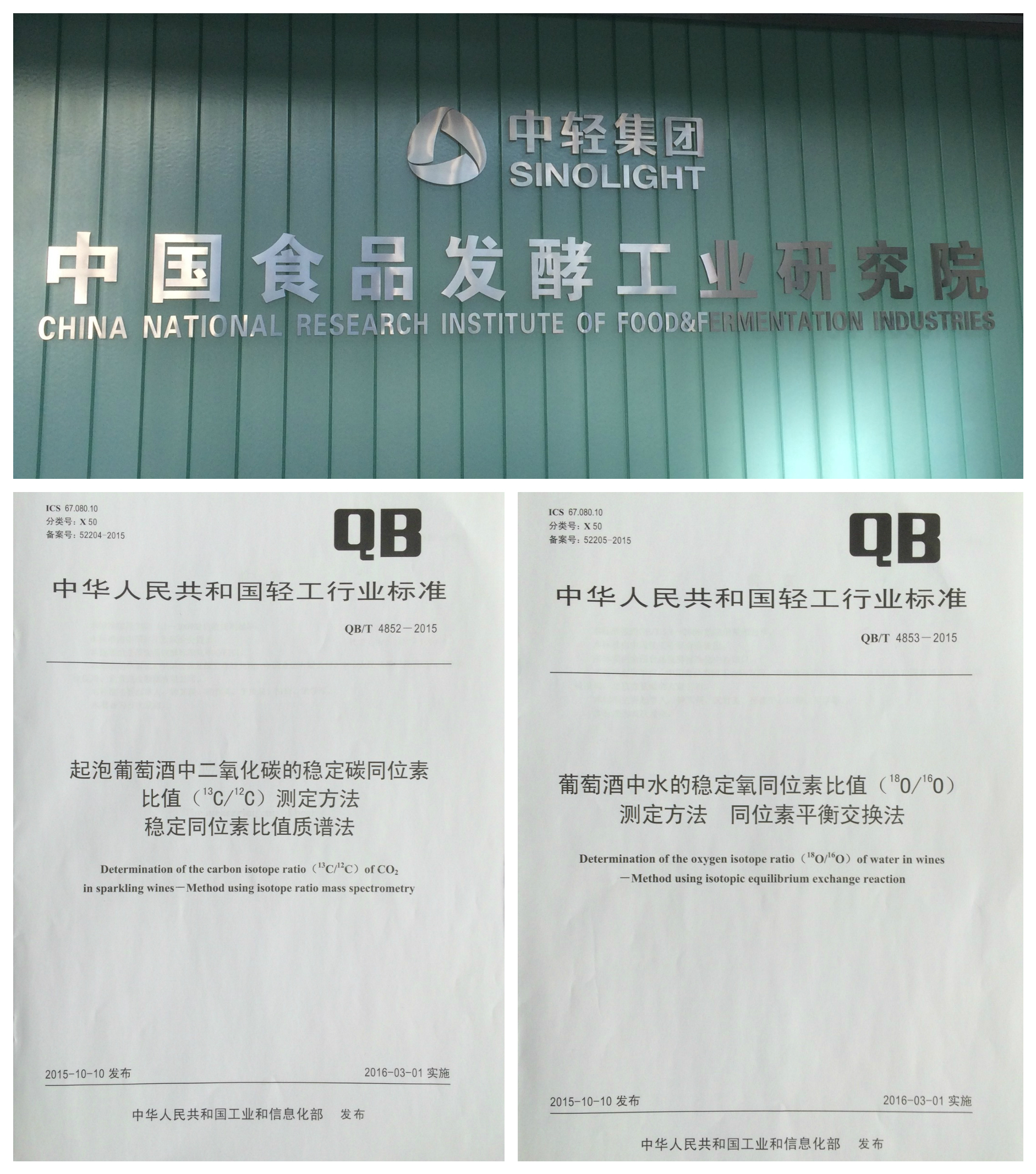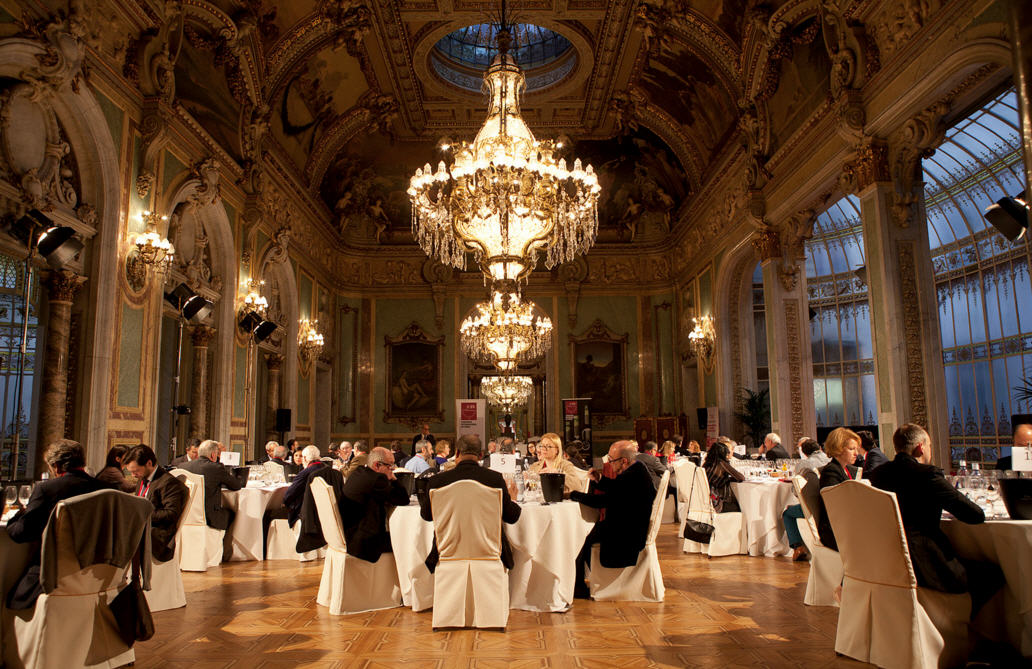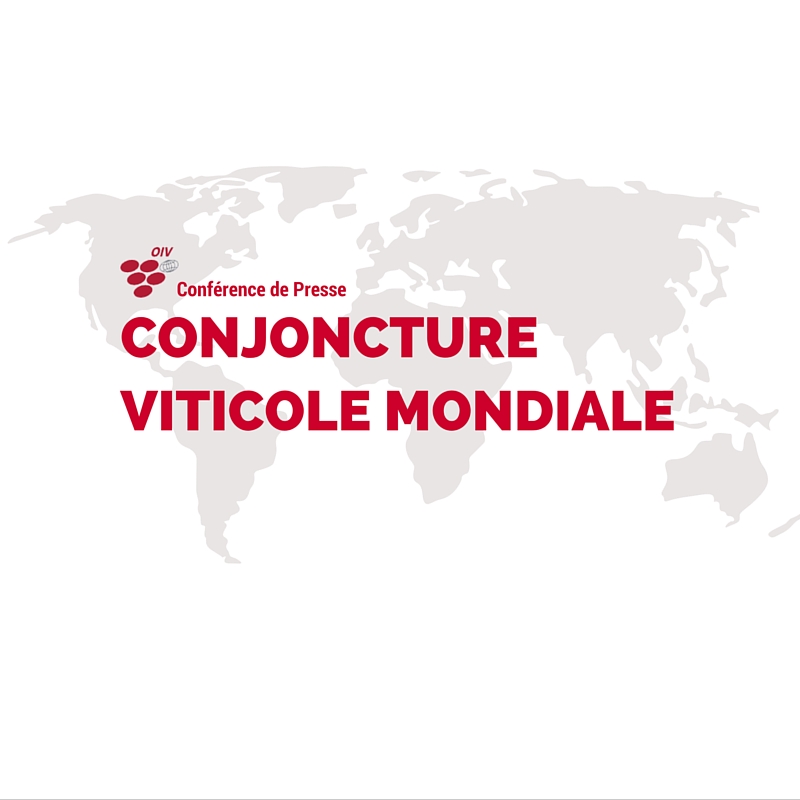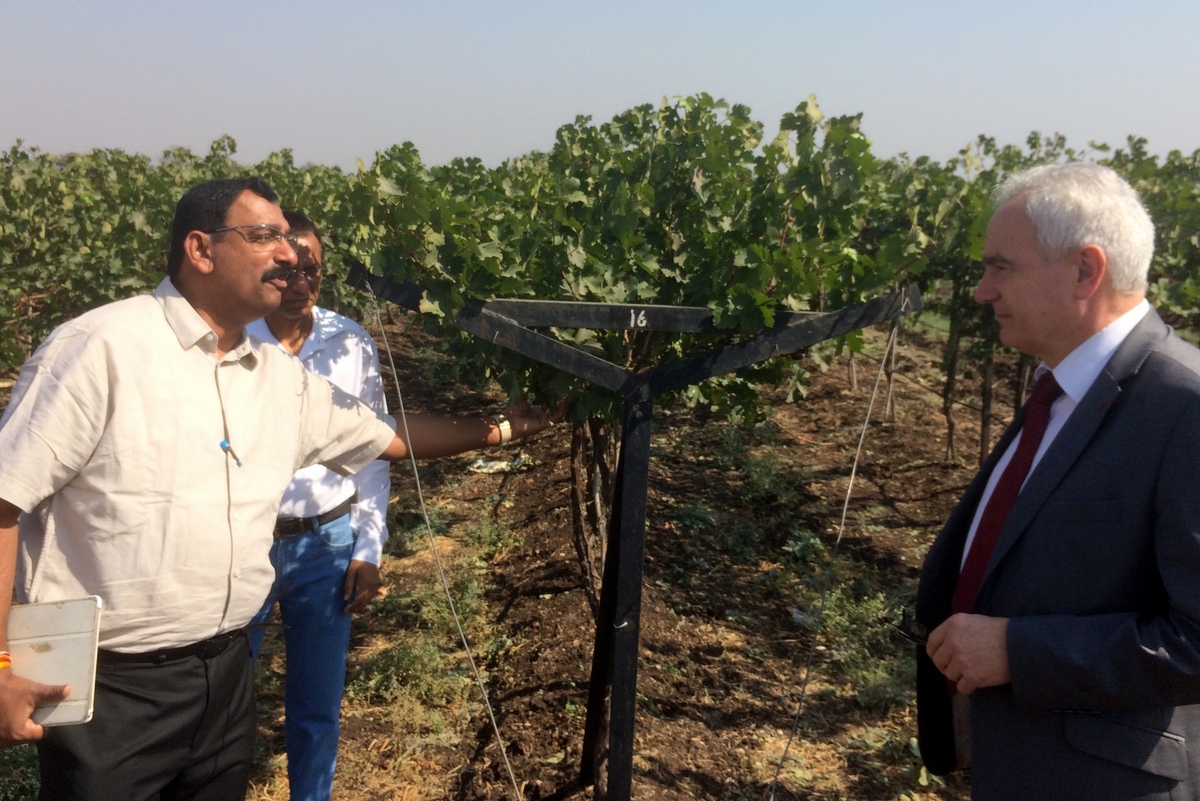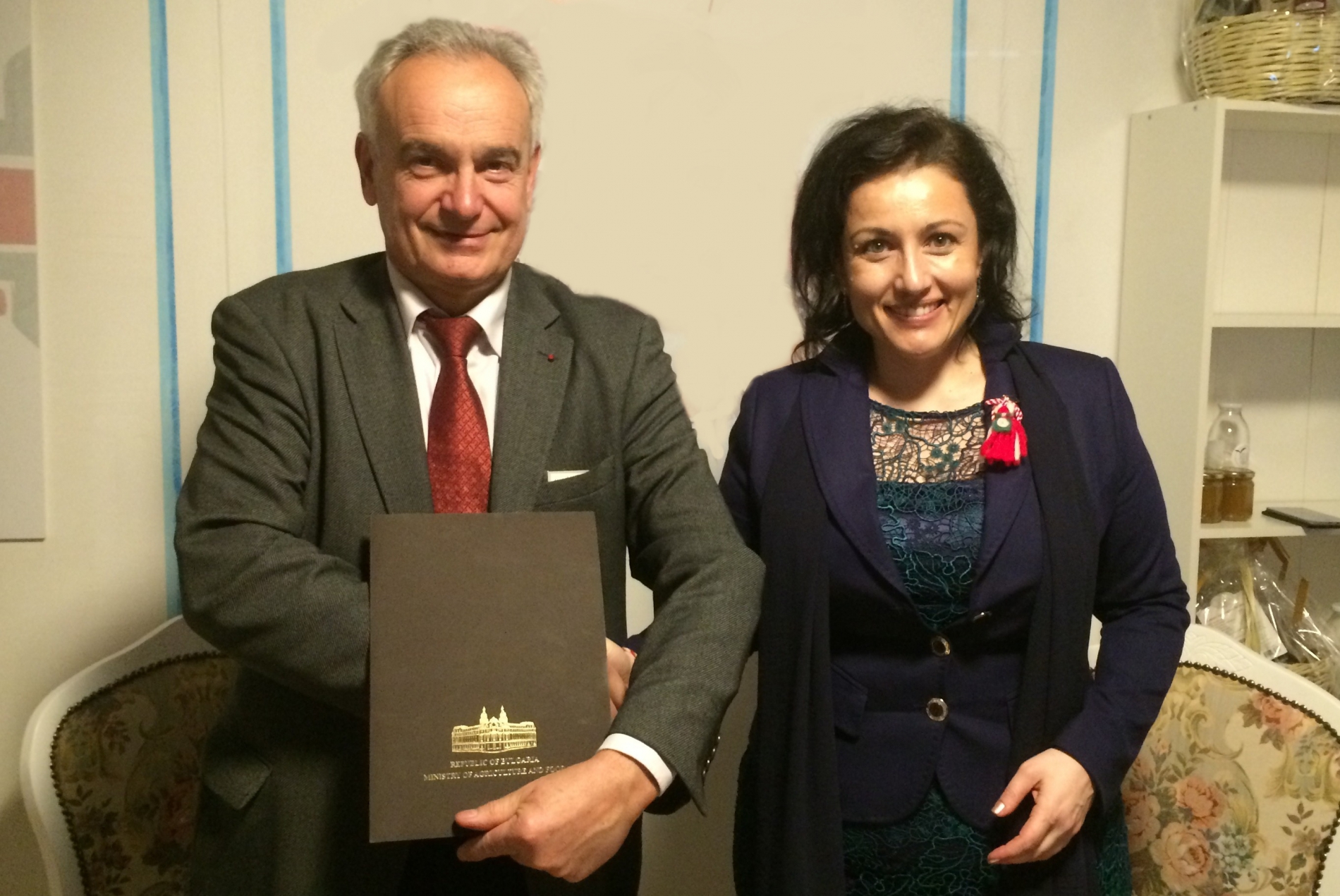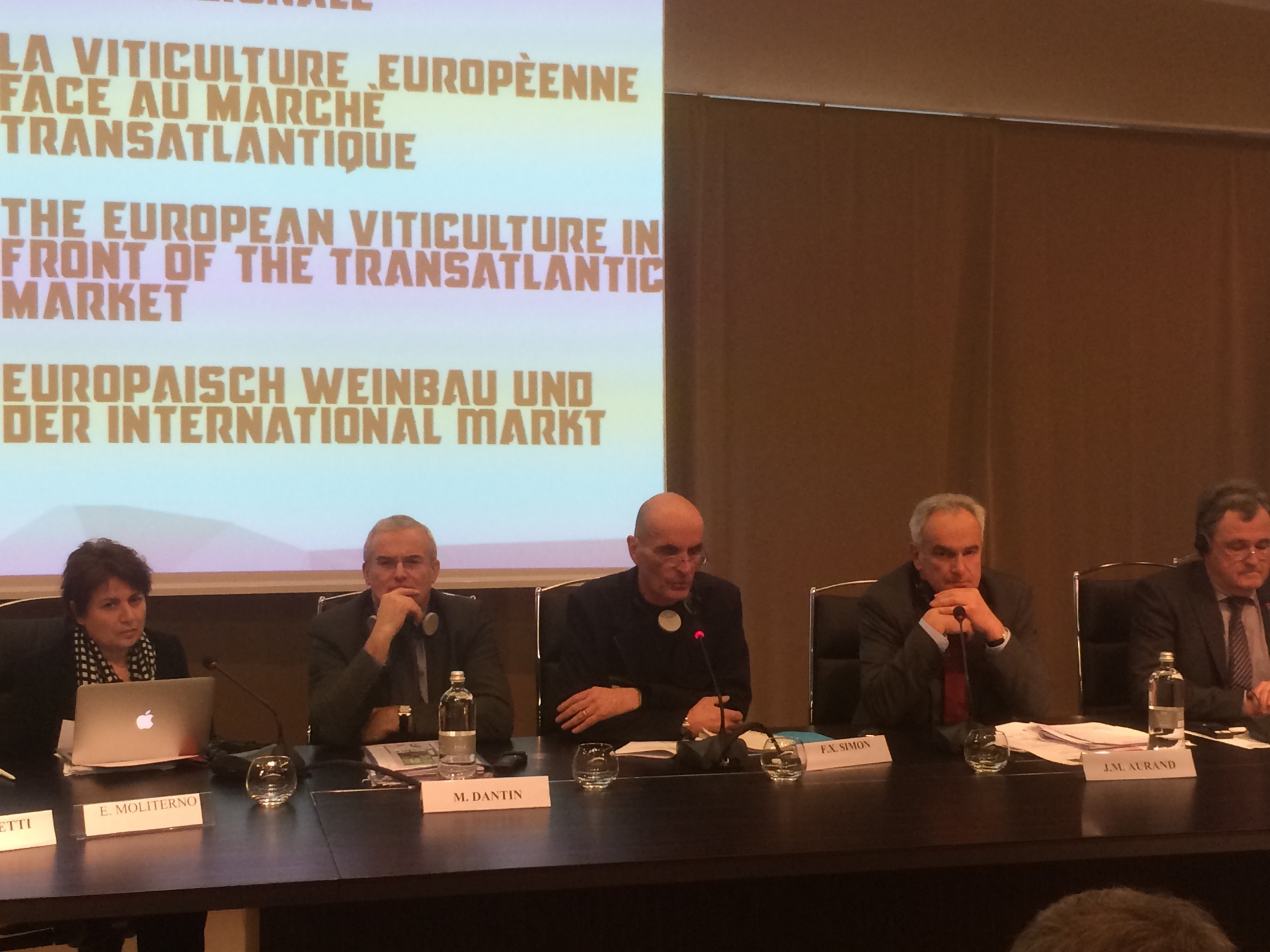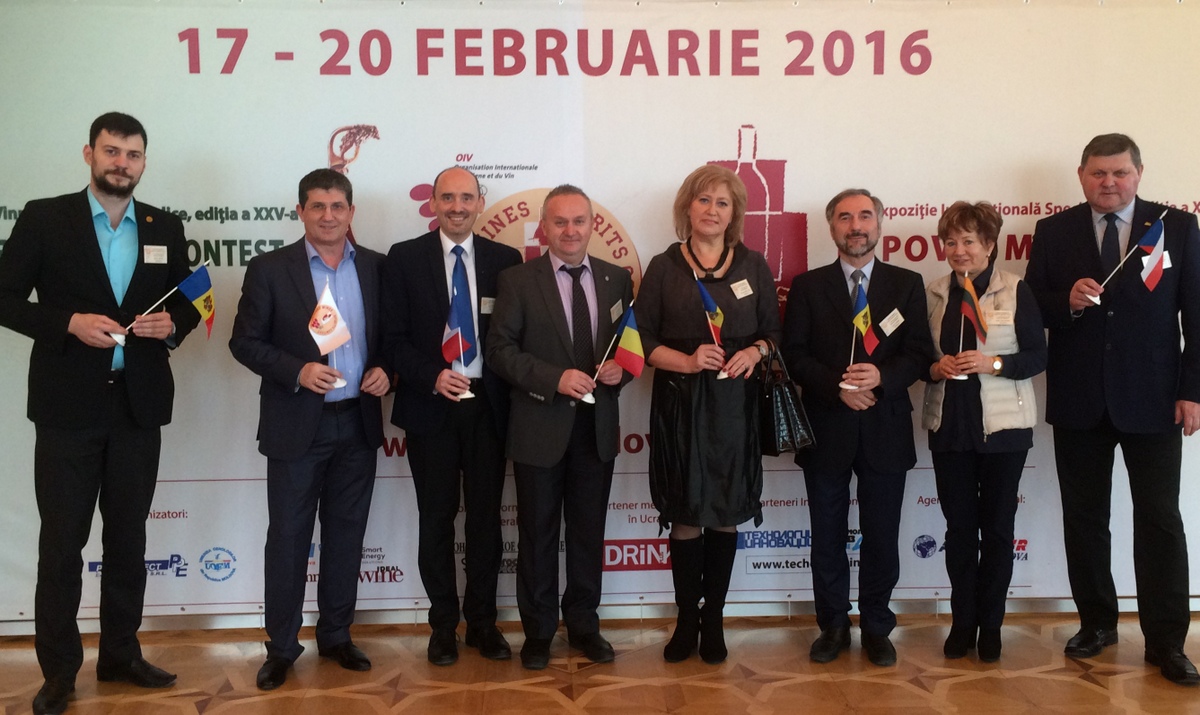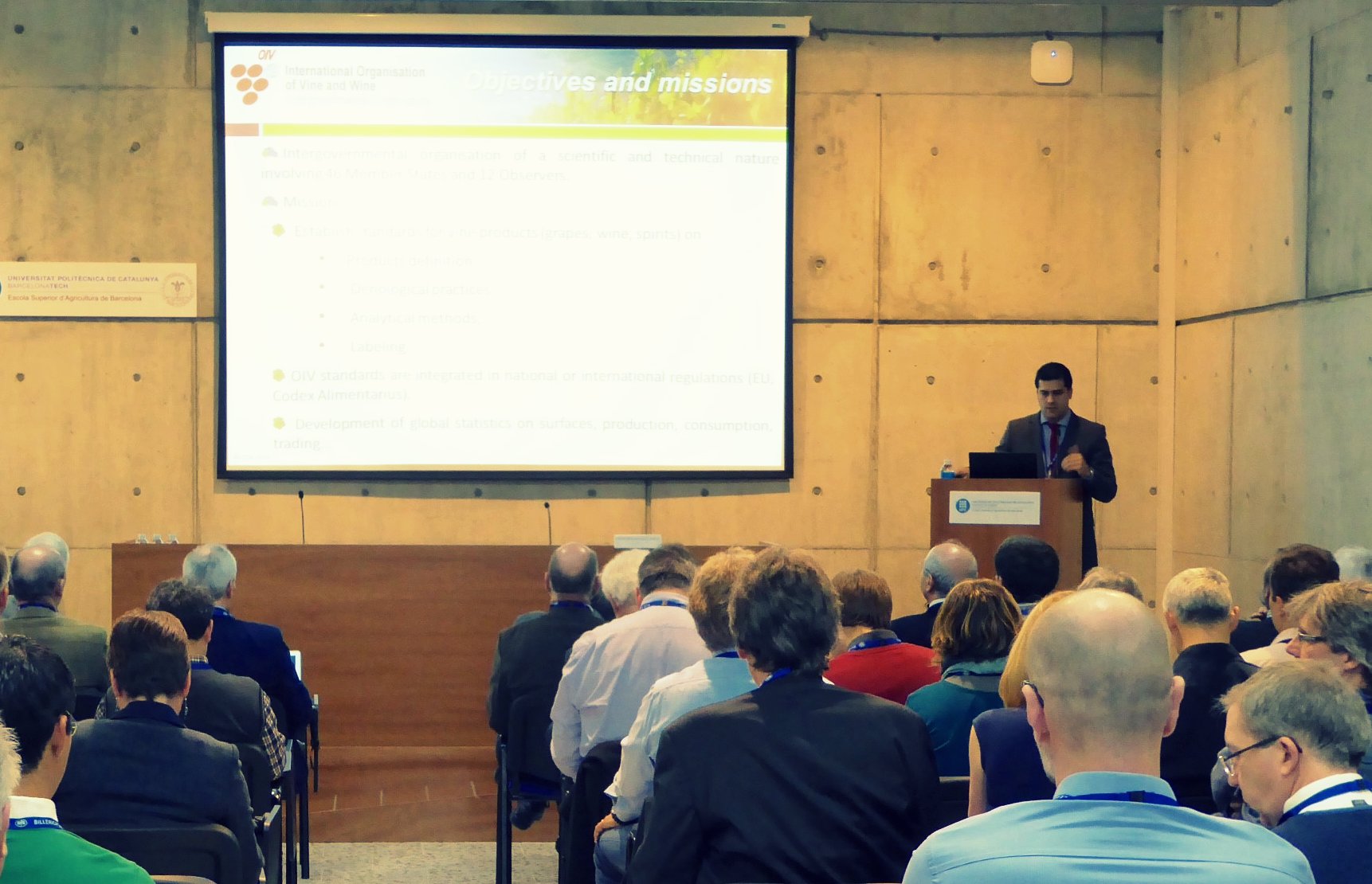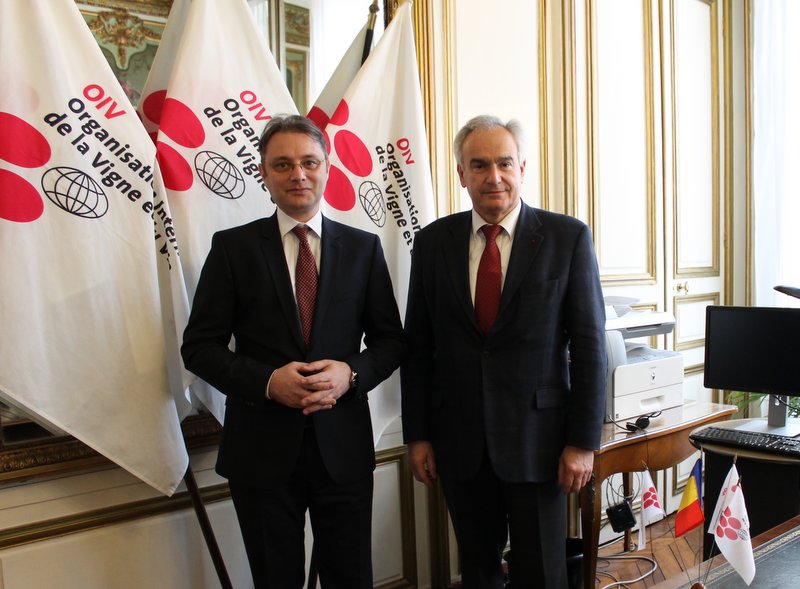24 Mar 2016
The CNIFFI is, among other things, the public organisation in charge of drawing up technical standards for fermented beverages.Dr Ruf, who had already met with representatives of this body in September 2012, presented the missions and activities of the OIV in the field of oenological practices and methods of analysis to the CNIFFI delegation led by the Director, Dr Deliang Wang.The discussions were particularly focused on the OIV's activities and the impact of its standards on global vitiviniculture, especially with regard to methods of analysis. The members of the CNIFFI emphasised the importance of OIV standards and recalled the involvement of their Institute with the Guangdong Inspection and Quarantine Technology Center (IQTC) in translating the OIV Compendium of Methods of Analysis into Chinese. Likewise, the heads of the CNIFFI indicated that, very recently, OIV methods of analysis relating to the determination of the isotope ratio of carbon and oxygen had been included in Chinese analytical standards.The CNIFFI representatives finally stressed the importance of the work of the OIV and the interest in continuing to exchange information between the two organisations.
23 Mar 2016
Placed under the patronage of the OIV, this international competition brought together 1854 wines (20% more than in 2015) from 21 countries.The Director General of the International Organisation of Vine and Wine, Jean-Marie Aurand, praised its success.Assessed by independent, experienced judges in accordance with the international standards set by the OIV, the wines are selected with every assurance of diligence and transparency.In the same way as other international wine competitions placed under the patronage of the OIV, Bacchus contributes to awareness of the diversity of wines in the world. It gives producers the opportunity to compete in an increasingly globalised world. More generally, it helps to promote the image and culture of wine.
18 Mar 2016
To attend this press conference, journalists are kindly asked to send an email with their name and their professional contact details to press@oiv.int.Date: Monday 18 April 2016Time: 11:00 amLocation: International Organisation of Vine and Wine, (OIV), 18 Rue d'Aguesseau, Paris 75008 - Metro station Madeleine or Concorde [see map]
17 Mar 2016
For this session, OIV President Prof. Dr. Monika Christmann led the OIV delegation, which also comprised the OIV Scientific Coordinator, Dr Jean-Claude Ruf.Among the various items on the agenda, one particular point concerned food additives and the applicable provisions in food category 14.2.3 (Grape wines) and its sub-categories.For grape wine, which forms part of Annex 3, the additives that are approved for use in the “Grape wines” category and its sub-categories should be evaluated on a case-by-case basis.In 2015, the Committee agreed to establish an electronic working group to study the reasons for the gap between members in favour of listing additives with numerical maximum limits versus Good Manufacturing Practices (GMP), with the purpose of proposing a common approach. Four issues of concern regarding the use of additives in grape wines were defined: wine identity, wine stability, the global applicability of limits and innovation in the wine sector. With the aim of reaching an agreement, a common approach was proposed to set limitations for wine additives as GMP, while making reference to internationally recognised bodies with expertise in establishing GMP for these additives. However, although many members proposed referring to the OIV, no consensus was found in this regard.After long discussions and in the absence of an agreement, the Committee approved the recommendation to establish an electronic working group co-chaired by the European Union and Australia. The purpose of this group will be to develop a discussion paper for the next session containing the various recommendations and analyses vis-à-vis possible amendments to the Codex General Standard for Food Additives (GSFA) for the “Grape wines” category.At the same time as these discussions, the President of the OIV developed contacts with the representatives of numerous delegations, as well as with those of the FAO and of the JECFA, and with the Secretariat of the Codex Alimentarius.[EN] OIV Comments on grape wine issue - CRD 19[EN] OIV Statement in session - CRD 34
14 Mar 2016
During this visit, which was very well organised by the Indian Ministry of External Affairs, Jean-Marie Aurand met in Delhi with the heads of the different relevant ministerial departments and institutions: the Ministry of External Affairs, Ministry of Agriculture, Ministry of Food Processing Industries and the Ministry of Commerce.The Director General presented the different activities of the OIV and expressed a desire that the participation of Indian experts in the various work projects of the OIV be strengthened.This desire was largely shared by the diverse representatives within a context in which India declared its ambitions with regard to development of the vitivinicultural sector, not only for the production of table grapes and dried grapes, but also for wine.During a meeting with the Chairperson of the Food Safety and Standards Authority, Jean-Marie Aurand stressed the importance attached to the international harmonisation of standards and oenological practices in order to improve conditions for the production and marketing of wines. The action of the OIV goes to the heart of these concerns, particularly through the International Code of Oenological Practices, upon which numerous national and international regulations are based.The contacts made in Delhi were followed by a meeting with the Director of the National Research Centre for Grapes in Pune, another with the representatives of the All India Wine Producers Association and a visit to the vineyards of the Sula group in Nashik – the leading company in the national vitivinicultural sector.India has a vineyard surface area of 120,000 ha, 90% of which is dedicated to the production of table grapes and dried grapes. Globally, India is one of the top five producers of table grapes, which it exports mainly to Western markets and to the Middle East. This counter seasonality of this production greatly adds to its value.Wine production is steadily developing, driven by a growth in consumption. It reached 175,000 hL in 2014, having doubled in 10 years. Consumption increased tenfold, with a significant rise since 2007 (from 19,000 hL in 2007 to 190,000 hL in 2014).
04 Mar 2016
After recalling the recent developments in Bulgarian viticulture and indicating the strategic geographical positioning of Bulgaria, Ms Taneva assured Jean-Marie Aurand of the support of the Ministry and of the National Vine and Wine Chamber in the organisation of the OIV Congress and General Assembly.The Director General thanked Ms Taneva for this proposal and specified that it would be submitted to the Executive Committee on 16 April so that a decision may be taken.
29 Feb 2016
In response to the invitation of AREV President Sergio Chiamparino, Jean-Marie Aurand spoke at a round table dedicated to "European viticulture in the international market".On this occasion, the Director General praised the signing of the agreement between the OIV and AREV (an OIV Observer), which marks a new dynamic of collaboration, and expressed a desire for AREV representatives to actively participate in the work of the OIV carried out within the different commissions.AREV brings together 70 European vitivinicultural regions. Its mission is to promote the common interests of wine-producing regions within the European and global economy.
18 Feb 2016
During an interview with Yann Juban, Assistant to the Director General of the OIV, Eduard Grama recalled the importance that he attaches to the vitivinicultural sector, having managed a renowned winery in Moldova himself.He praised the good relationship that exists with the OIV and clearly insisted on the need to develop the exchange of expertise with the OIV scientific and technical network. This strengthened involvement will entail the regular participation of experts and the undertaking of the technical workshops project to the advantage of the Moldovan sector, in cooperation with the National Office for Vine and Wine, as was emphasised by its Director, Mr Dumitru Munteanu, who took part in the meeting.Yann Juban expressed his satisfaction regarding the organisation of the contest in Chisinau, which fully respected the OIV Patronage regulations and made it possible to see the qualitative evolution of Moldovan vitivinicultural products within the context of investments made in reforming the sector. Modelled on an event that took place at the OIV headquarters several years ago, a project for the presentation of Moldovan wines in Paris was also envisaged with the Minister.
17 Feb 2016
One of the central themes of this conference was the integrated management of pests and diseases based on the development of new precision technologies for the control of pesticide use, protecting food safety and promoting sustainable development in the vitivinicultural industry. The OIV was represented by the Head of the Viticulture Unit, Mario de la Fuente, who gave a presentation on the actions that are carried out within the "Viticulture" Commission in relation to the reduction and reasoned use of pesticides in the vineyard.Mario de la FuenteThe conference, presided over by the Director General of the Barcelona School of Agricultural Engineering (ESAB), was attended by over 60 speakers from many research centres and/or universities the world over, numerous representatives from the main producers of phytosanitary products and pesticides and manufacturers of application machinery, students, etc., thus bringing together almost 200 people each day.
The work was organised according to diverse thematic areas: Sprayer performance/Quantifying spray parameters and standards; Operator training on phytosanitary products; Biological efficacy of spraying; Precision application; Reducing off-target exposure; Spray physics and spray droplets and Application to tree and bush crops.In total, 12 posters, 45 oral communications and 3 opening addresses highlighted the existing problems and challenges, while at the same time seeking to set the necessary bases for scientific and technological advances in pesticide application. These debates essentially contributed to the technological transfer of this progress for the vitivinicultural sector and, especially, to sustainability and integrated management.The new challenges and concerns faced by the vitivinicultural sector are also of significant concern to the OIV. Strong evidence of this is the important presence of the promotion of sustainable viticulture (which affects pesticide management, among other factors) within one of its five strategic axes for the 2015-2019 Strategic Plan. As part of its commitment to sustainability, the OIV has been working on various resolutions since 1997: on integrated production (VITI 1/1999; CST 2004); on the preservation of biodiversity (VITI 01/2002); on organic production (ECO 460/2012) and, of course, sustainable production (CST 2004; CST 2008 and VITI 422/2011). Similarly, the Organisation has worked on the management of different pests and diseases such as, for example, phytoplasmas (VITI 3/2006) or trunk diseases (VITI 2/2006).In addition, the OIV has adopted three resolutions on maximum residue limits for pesticides. Two of these encourage the creation of a directory of official lists of Member States or other international organisations with maximum residue limits (MRLs) for grapes (VITI 01/2007) and wine (OENO 14/2006), while the other resolution is on the adoption of a standardised methodology for the determination of pesticide residues in wine by an extractive method (OENO 436/2012). The Vine Protection and Viticultural Techniques (PROTEC) Expert Group is continuing to work on different challenges intrinsically linked to sustainability, integrated management or the application of phytosanitary products, through various actions:
- General principles for sustainable viticulture. Environmental, social and economic aspects (CST 12-518). Practical recommendations (CST 13-530).
- Reduction or reasonable use of pesticides in viticulture. During these conferences, the preliminary results of a questionnaire carried out on Member Countries with regard to pesticide use were presented.
- Overall harmonisation of the MRLs and protocols for pesticide application. It is extremely advisable that the protocols for the use of pesticides are standardised and further harmonisation of MRLs is sought for the active substances used in viticulture the world over.
09 Feb 2016
Jean-Marie Aurand praised the quality of the relationship between Romania and the Organisation, which is rooted in over 90 years of common history, given that Romania was one of the founding members.The Romanian delegation is very active within the OIV. Romania hosted the 2013 Congress in Bucharest and last year the OIV Awards ceremony was held at the Romanian Embassy in Paris.H.E. Mr Luca Niculescu confirmed the strong interest that his country has in the work of the Organisation, at a time when the Romanian vitivinicultural sector is undergoing an extensive process of modernisation.It is within this context that Romania proposes to organise a presentation of its wines at the OIV headquarters this year.
